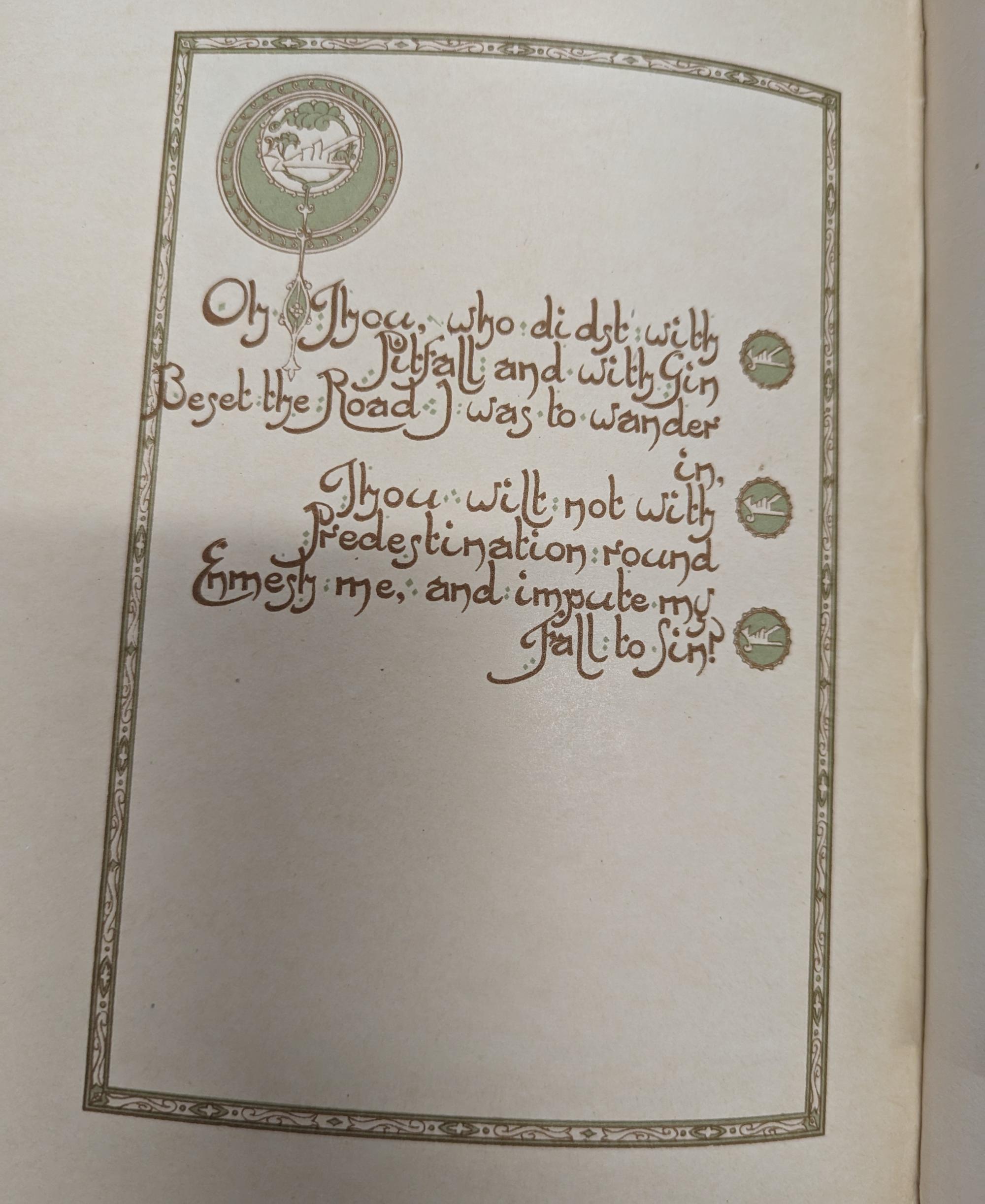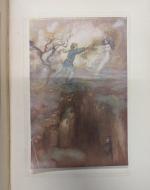Created by Meganne Patterson on Wed, 05/10/2023 - 19:13
Description:
Many of the illustrations done by Hungarian artist Willy Pogany during his lifetime tell entire stories all by themselves. While some of them make considerably more sense in context with the poem’s stanzas, several of them create entire epics that sprawl off of the page. The illustration of stanza fifty-seven highlights this intimacy between poetry and artist, due to the presentation of how Willy Pogany depicts temptation of the human spirit, but it is also a limited point of view, since it fails to depict the fine line between enemy and ally.
The fifty-seventh stanza of the Rubaiyat describes persistence through terrible instances, and the illustration frames it in whimsical watercolor and fairytale-like storytelling. When the stanza describes temptation through desires of human existence, things like liquor and “pitfalls”, which encapsulates all that a human could feel as a temptation to “beset the Road I was to wander /in.”, The illustration corresponds with a man chasing after what appears to be a sprite or ethereal being, designed in pale blues and grays. The woman almost appears to be translucent in this way, and I would not have understood without the stanza that this coloring choice reflects her divinity; someone who leads us through the trials of our lives with grace.
The bottom-right corner of the artwork has a not-so-hidden detail that is surrounded by nothing but color, highlighting that this Devil, this Grim Reaper, this Scythe, has the upper-hand. The evil temptation of our lives looms over every one of our choices and tugs us, trying to get us to “fall into Sin”. However, once I had noticed all of these details, I was once again drawn to the top half of the illustration, and while the stanza describes the central human as being tempted (“beset”) with “pitfalls and gin”, I see the gin in question being presented as an option by the ethereal woman, one who I had assumed to be an angel, with her white clothing, and the contrasts with the Devil down below.
In this way, I propose that the ethereal woman is a metaphor. She presents the temptation with a gracious air, like it is a gift, a blessing, while the evil in our lives presents the same temptation as just that: evil. A curse disguised with gift wrap and a ribbon is far more likely to be picked up and held close to our proverbial chest. How can we tell if we are being beset by the influences in our lives that we deem as “no good”, or rather the ones that we hold in high regard and high esteem? Only we can answer that ourselves.
Khayyam, Omar. (Edward FitzGerald). The Rubaiyat. London, United Kingdom, Vincent and Brooks, 1909.



